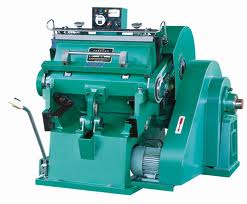Challenging Plaintiff’s Proof of Reasonable Alternative Design
By admin on March 6, 2012
 In the majority of jurisdictions, to establish a claim for design defect in a product liability action, the plaintiff must present some proof of a “feasible alternative design” or “reasonable alternative design.”
In the majority of jurisdictions, to establish a claim for design defect in a product liability action, the plaintiff must present some proof of a “feasible alternative design” or “reasonable alternative design.”
In an article published in the IADC Product Liability Committee Newsletter (February 2012), "No Other Alternative: Challenging Plaintiff’s Proof of Reasonable Alternative Design", Elbert S. Dorn, a partner at Nexen Pruet, LLC, in South Carolina, provides valuable tips to the defense practitioner concerning how to agressively press legal and factual points to test plaintiff’s proof of reasonable alternative design.
According to Dorn, legal arguments on reasonable alternative design should be included in Daubert or other motions to exclude or limit the plaintiff’s expert testimony, motions for summary judgment, motions in limine to challenge evidence of proposed design alternatives, and in oral and written motions for judgment as a matter of law at the close of plaintiff’s case, at the completion of the defense case, and after any adverse verdict. Additionally, the defense position on reasonable alternative design should be articulated clearly in proposed requests to charge (or jury instructions).
In challenging plaintiff’s proof or evidence of a reasonable alternative design, the following factors and issues should be considered:
• whether the reasonable alternative design is being presented through expert testimony, and, if so, is the expert qualified to present reliable evidence of a design alternative?
• Is the design merely conceptual or theoretical in nature?
• Has the design been reduced to scale drawings fully illustrating its dimensions, characteristics and mechanics?
• The existence of a prototype or model demonstrating or incorporating the proposed design.
• Is the alternative design subject to a U.S. or foreign patent – has the proponent or anyone else sought patent protection?
• Has the alternative design been the subject of peer-reviewed articles or treatises or otherwise reviewed in the scientific community?
• Has the proposed design ever been incorporated or utilized by another manufacturer in a real-world setting – while not a totally decisive factor, it is powerful to establish that which plaintiff proposes as an alternative design has never before been utilized in the particular industry.
• Has the proposed design been subjected to testing to measure its effectiveness, functionality, and performance?
• What is the effect of the reasonable alternative design on the utility and functionality of the product – does the proposed design compromise or diminish the utility of the product – this is an overarching issue and should be fully explored.
• What analysis has been performed of the adverse or increased safety risks of the alternative design – does it potentially affect the relative safety of other components or the overall safety of the product?
• What cost analysis or economic impact of the alternative has been performed?
• What analysis or testing supports the durability of the proposed alternative – will it require additional maintenance and repair or affect product longevity?
• The effect of the alternative design on compliance with governmental regulations and standards.
• Would the alternative design have prevented the specific harm or injury which is the subject of the case?
• Was the technology supporting the alternative design readily available to the manufacturer at the time the subject product was designed or manufactured?
Fundamentally, the defense against plaintiff’s argument that there existed a reasonable alternative designr resonates with a basic human emotion – “don’t criticize the way I do things unless you can do it better” or “do not criticize my play-calling and execution, if you have never played the game.” If this notion can be conveyed to judge and jury, all the better in establishing the defense to plaintiff’s contentions.

 Michael Hoenig’s Product Liability column in The New York Law Journal, “
Michael Hoenig’s Product Liability column in The New York Law Journal, “